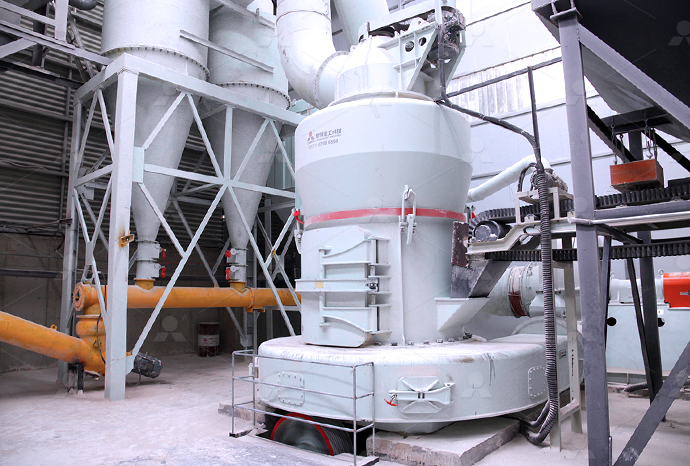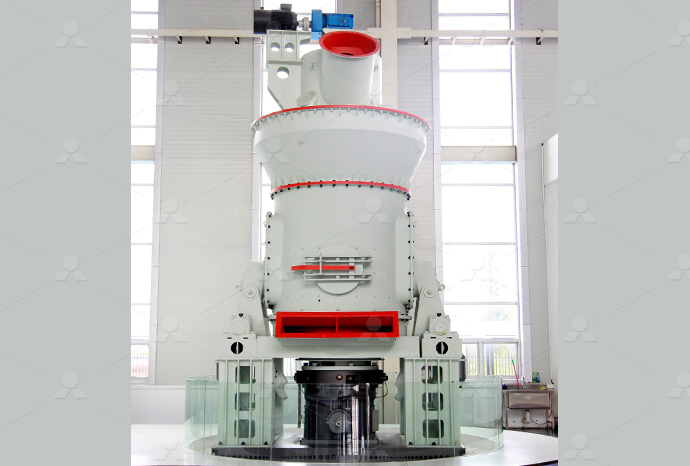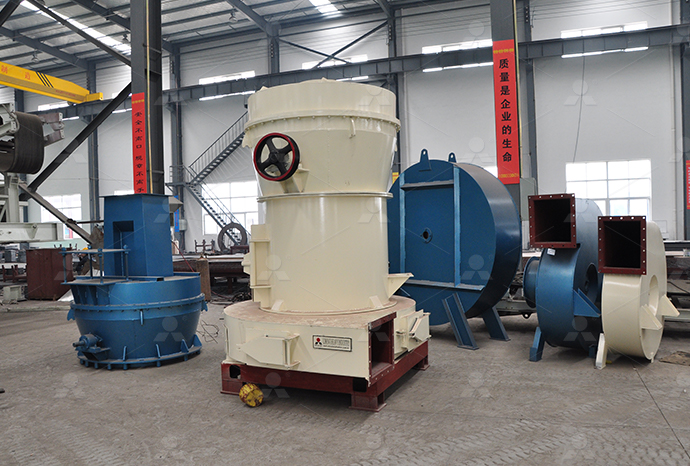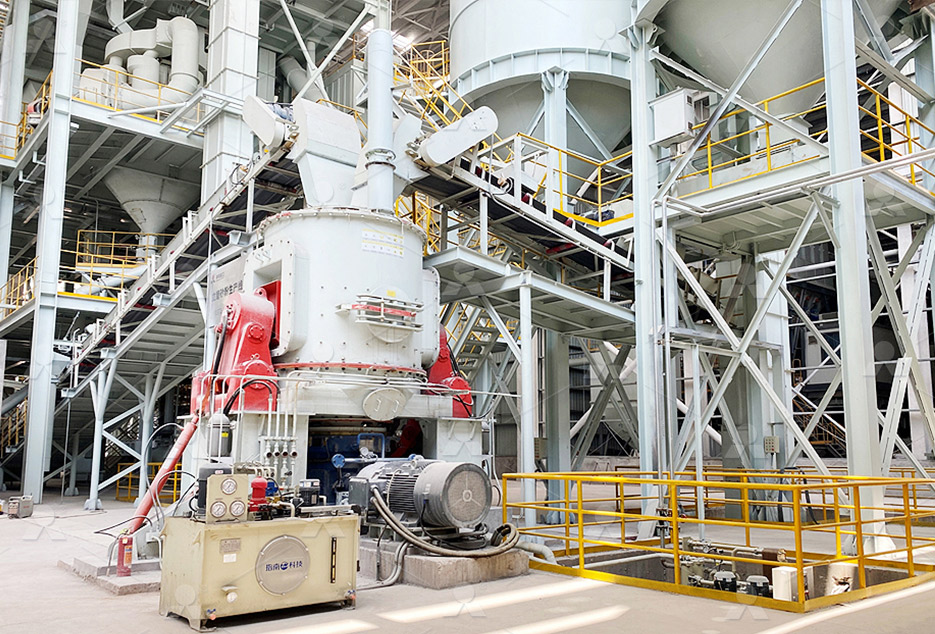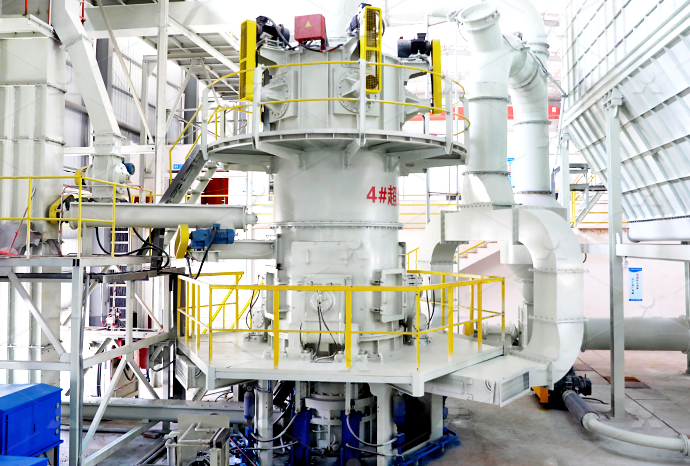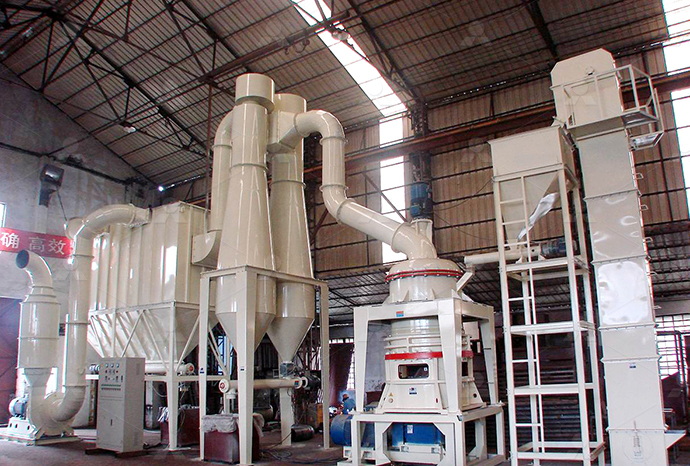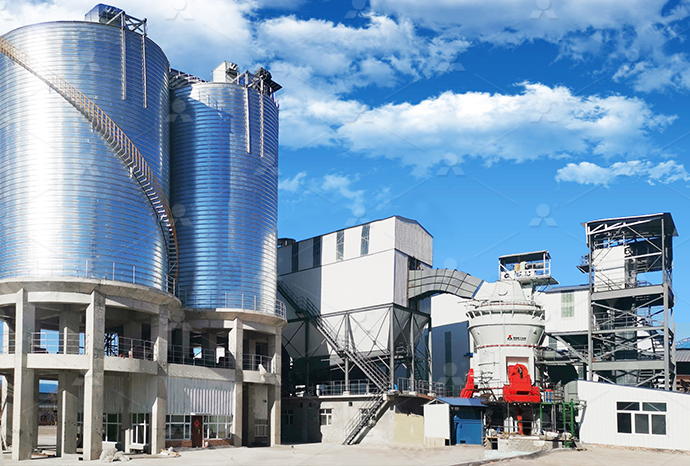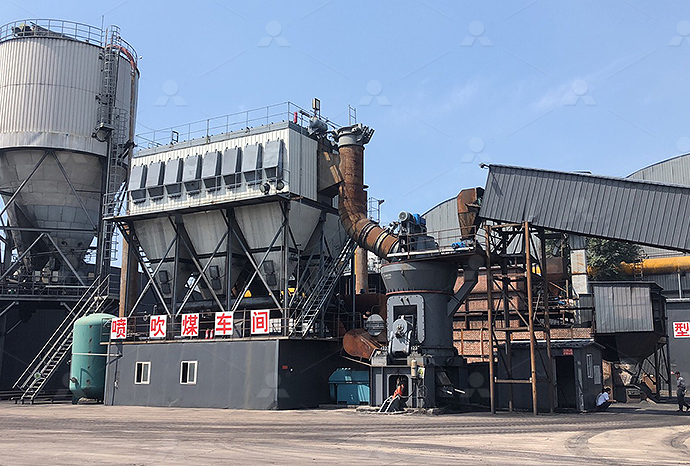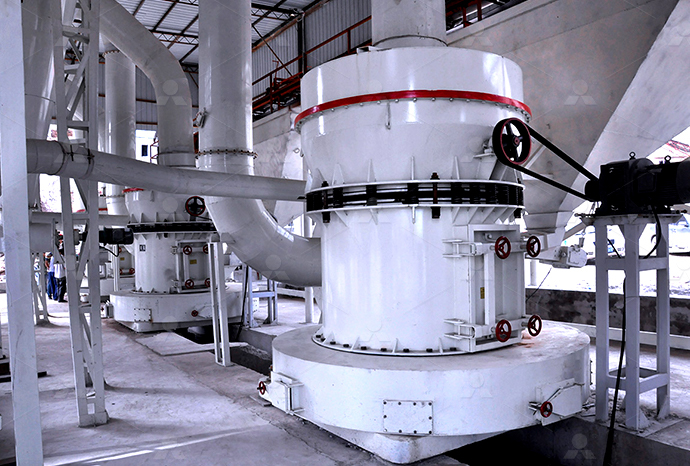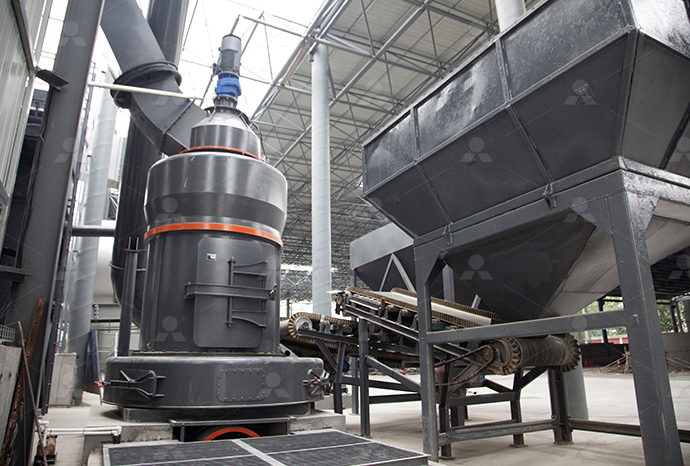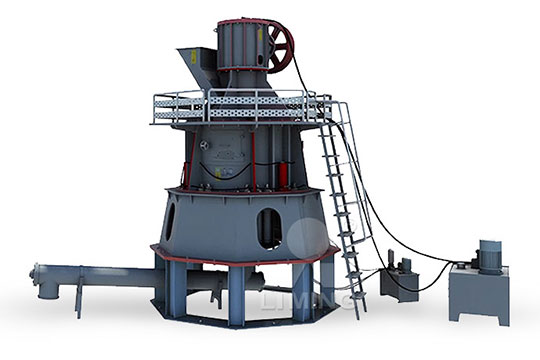
Chemical equation of reaction of removing silica with limestone during iron smelting
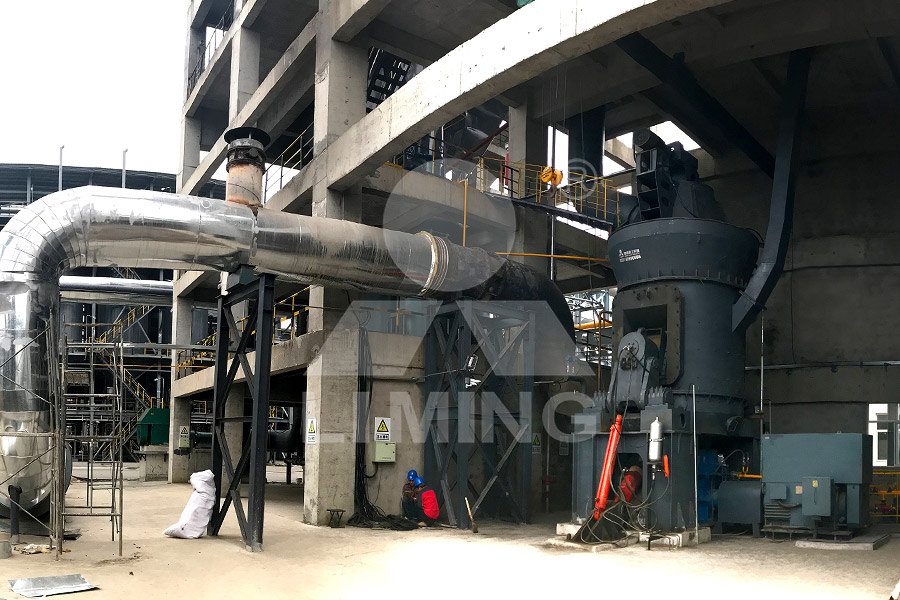
233: Metallurgy of Iron and Steel Chemistry LibreTexts
The individual reactions are indicated in Figure \(\PageIndex{2}\) The iron oxides are reduced in the upper region of the furnace In the middle region, limestone (calcium carbonate) decomposes, and the resulting calcium oxide combines During lime softening process calcium and magnesium are precipitated Calcium is deposited as calcium carbonate while magnesium is deposited as magnesium hydroxide Upon Silica Removal During Lime Softening in Water Treatment Plant2013年11月1日 It is shown that wollastonite isothermal synthesis proceeds at 550 K at a constant heat content, and rankinite isothermal synthesis proceeds at 750 K at a constant heat Thermal interaction between limestone and silica ResearchGate2013年12月10日 It is shown that wollastonite isothermal synthesis proceeds at 550 K at a constant heat content, and rankinite isothermal synthesis proceeds at 750 K at a constant heat Thermal interaction between limestone and silica
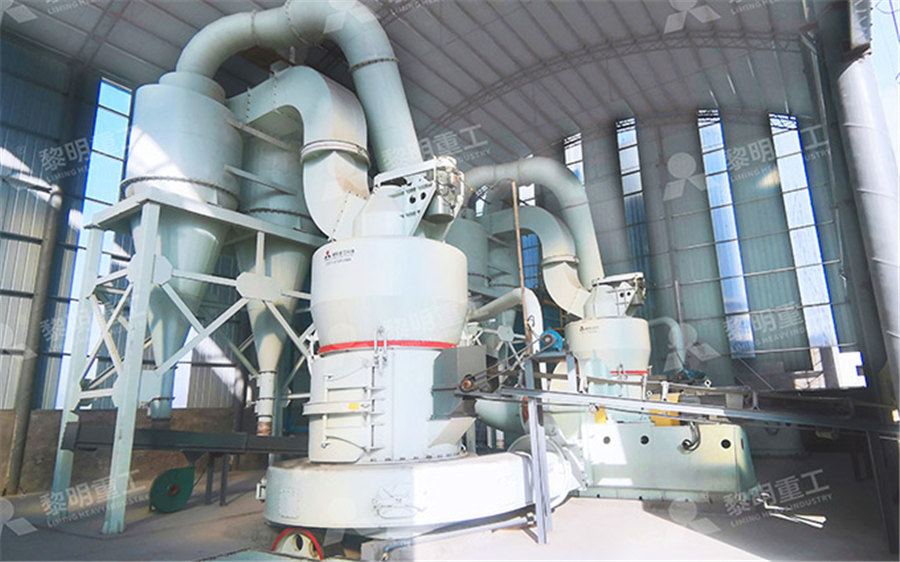
Limesilica reaction Big Chemical Encyclopedia
The lime (CaO) may come from limestone or chalk deposits, and the silica (Si02) and alumina (AI2O3) are often obtained in clays or slags The blast furnaces of steel mills are a common Extraction of Iron Chemistry of the blast furnace Limestone is calcium carbonate (CaCO 3) and it is added to the blast furnace to remove the impurities in the iron ore Calcium carbonate is Extraction of Iron in the Blast Furnace GCSE SCIENCEAbstract—A thermodynamic analysis of the interaction between limestone and silica is carried out under normal pressure with the use of the TERRA program system An equilibrium system is Thermal Interaction between Limestone and Silica SpringerIt finds that during lime softening, silica is effectively removed through adsorption onto precipitating magnesium hydroxide particles Experimental results from a water treatment plant Silica Removal During Lime Softening in Water Treatment Plant
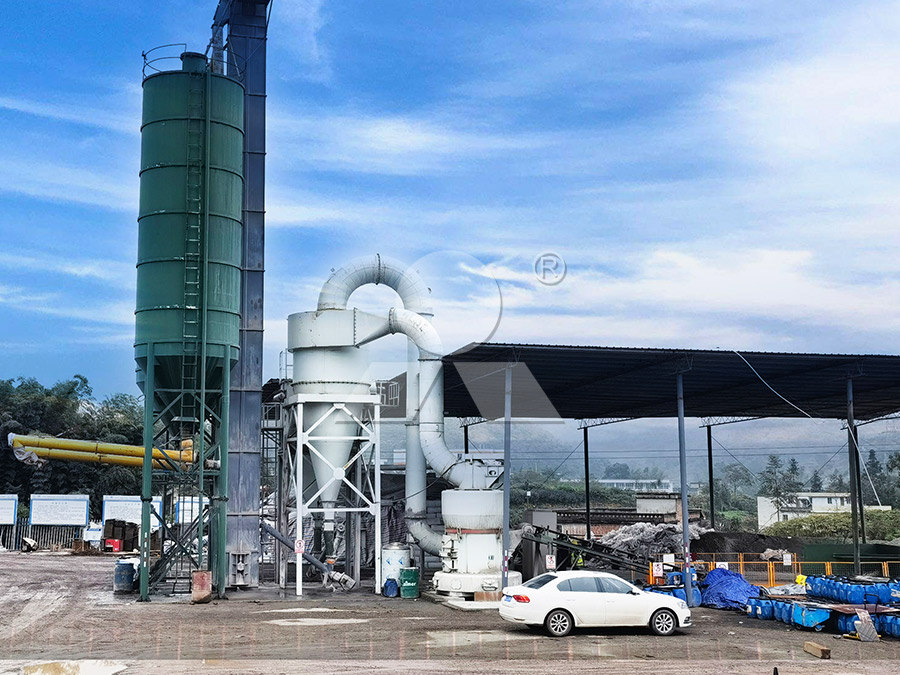
Fluxing Strategies for the Direct to Blister Smelting of High Silica
Direct to blister smelting is possible using either iron oxide fluxes to produce a fayalite type slag or silica and lime fluxes to produce a limesilicairon oxide slag The benefits of lime and silica Silica is believed to be removed from water during a 'highpH softening treatment' by two different mechanisms: (a) by coprecipitation as calcium and magnesium silicate; and (b) by adsorptionSimplified scheme of the reactions that may occur during silica 2018年11月21日 Write chemical equations for the reaction that take place during smelting of haematite the equations that take place during the smelting of haematite is given above LimestoneCalcium carbonateHelps to remove acidic impurities from the iron by reacting with them to form molten slagAirOxygenAllows the coke to burn, Write chemical equations for the reaction that take place during SÐ8B ÉJí T ÆM¬óÿïûÓþ¿ÃZ÷ã sR µüÄ ! f šL Ó™–\–lmc%²äJ2 2üÿ¾©Õ¬§ä× íÙhòu"!i Bòº×óMÕö/ƒÙ*œ @j Rg ²û í}÷½ÿë×G 4݇”[ 5†2ã ¥ ï£ rïB ù wq±”°{ÖùÈ™hÏF Dá,bÎŒÀmÑ Ä¯,Ëúì´[†¯½Ï½æmKêäÖØ ~ 232: Pyrometallurgy Chemistry LibreTexts
.jpg)
The Uses of Limestone in the Production of Iron and Steel, in
Limestone is a very important material in the making of iron and steel Iron ores, such as haematite, contain iron oxide The production of iron involves reducing this iron oxide to iron in a furnace In steelmaking, limestone is used as a flux to remove impurities during the process A flux is a substance that is melted to make a slag Slag Extraction of Metals Extraction of Iron Iron is extracted from its ore in the blast furnace The main iron ore is called haematite Haematite is iron(III) oxide Fe 2 O 3 The iron ore contains impurities, mainly silica (silicon dioxide) Limestone (calcium carbonate) is added to the iron ore which reacts with the silica to form molten calcium silicate in the blast furnaceExtraction of Iron Haematite Limestone GCSE SCIENCETortuosity describes the influence of the shape of pores 78 Due to the complex nature of iron oxide pellet reduction, the following assumptions were required 77: The pellets are isothermal and spherical with uniform porosity and consist of dense fine grains with a constant radius; the reduction of grains is reversible, proceeds topochemically, and is controlled by chemical Reduction of Iron Oxides with Hydrogen—A ReviewThe Bayer process is a chemical process for refining aluminium hydroxide, Al(OH) 3 from bauxite; this aluminium hydroxide is subsequently calcined to produce alumina, Al 2 O 3The basis of the Bayer process is an understanding of the characteristics of the sodiumhydroxide—sodiumaluminate solution relationship, namely its ability to keep sodiumaluminate in a dissolved state Chemical Processing of Bauxite: Alumina and Silica
.jpg)
The following substances are put into the blast furnace while
The following substances are put into the blast furnace while manufacturing iron : Iron ore coke limestone and hot air In this context— i What is the name of the most common ore of iron and what is its chemical formula ? ii What is the purpose of using : a The coke b The limestone iii Write the equation for the reduction reaction which produces iron iv Name the substance 2020年2月20日 The chemical composition of each slag was calculated by using the R D value of each experiment and the chemical composition of the samples (mixtures of iron ore and lime) and offgas Table 8 shows the values of the main parameters of the products and the coproducts of each experiment for the operation time of 1495 sSlag Formation during Reduction of Iron Oxide Using Hydrogen 2023年9月20日 This reaction produces slag, which is capable of melting at lower temperatures Metal workers in smelting utilize flux for a variety of applications Catalyzing a reaction and chemically bonding the impurities and reaction product with the metal is the most prevalent There are three distinct types of fluxes:Smelting: Types, Process, Uses, Challenge, Effect Science InfoDecomposition Reaction of Limestone Free download as Word Doc (doc), PDF File (pdf), Text File (txt) or read online for free A decomposition reaction is a type of chemical reaction where a substance breaks down into simpler components For example, limestone (calcium carbonate) can decompose into calcium oxide and carbon dioxide This reaction is exothermic, releasing Decomposition Reaction of Limestone PDF Chemical Reactions
.jpg)
Extraction of Iron from Hematite Cambridge O Level
2023年11月2日 The symbol equations for the different stages of the extraction of iron from hematite are: Zone 1: The burning of carbon (coke) to provide heat and produce carbon dioxide:; C (s) + O 2 (g) → CO 2 (g) Zone 2: The 2022年8月23日 The blast furnace and direct reduction processes have been the major iron production routes for various iron ores (ie goethite, hematite, magnetite, maghemite, siderite, etc) in the past few (PDF) An Overview of the ReductionSmelting Process 1998年1月1日 The smelting of iron ore into metallic iron was first accomplished by primitive blast furnaces approximately three thousand years ago Improvements in the process over many centuries eventually led to the mass production of iron and to the industrial revolutionThe reactions of the blast furnace involve 1) combustion of the fuel and its conversion into carbon The Iron Blast Furnace: A Study in Chemical Thermodynamics2021年12月9日 A clean energy revolution is occurring across the world As iron and steelmaking have a tremendous impact on the amount of CO2 emissions, there is an increasing attraction towards improving the A Review on the Kinetics of Iron Ore Reduction by Hydrogen
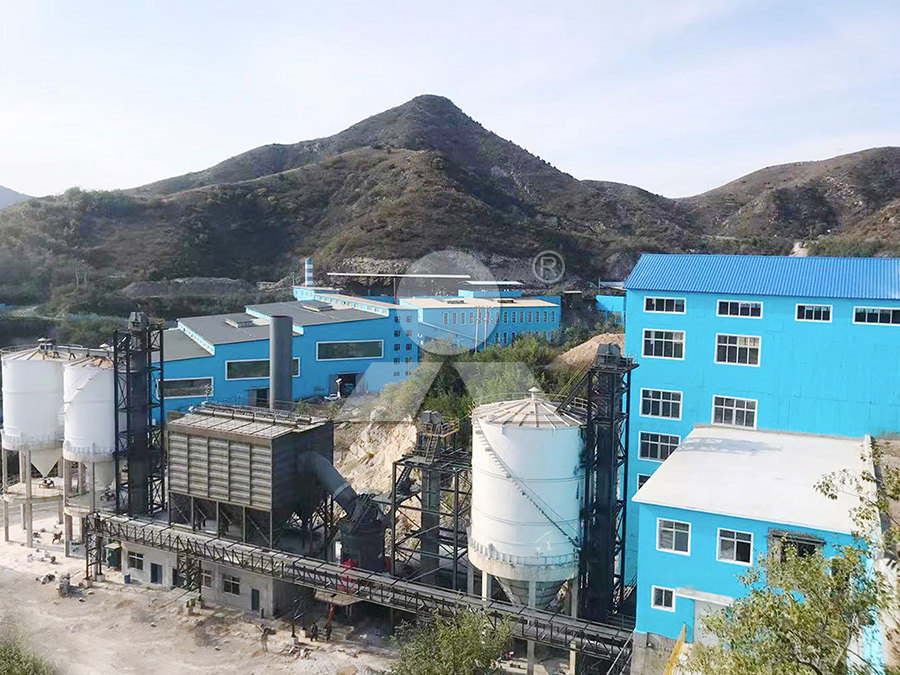
From Ore to Iron with Smelting and Direct Iron Reduction
2017年10月17日 Smelting Reduction Figure 2: The smelt reduction vessel (SRV) is the core technology component of the Hismelt process Source: RioTinto While years of ironmaking technology innovations have optimized blast furnace productivity, two alternative processes—smelting reduction and direct iron reduction— are growing in adoption The This reaction implies the process can be cycled, going from limestone (calcium carbonate) back to limestone via quicklime (calcium oxide) and slaked lime (calcium hydroxide) Limestone and its products have many industrial uses, including in the manufacture of The Cycle of Reactions involving Limestone and Products Made Extraction of Metals Extraction of Iron Iron is extracted from its ore in the blast furnace The main iron ore is called haematite Haematite is iron(III) oxide Fe 2 O 3 The iron ore contains impurities, mainly silica (silicon dioxide) Limestone (calcium carbonate) is added to the iron ore which reacts with the silica to form molten calcium silicate in the blast furnaceExtraction of Iron Haematite Limestone GCSE SCIENCE2009年5月22日 6 Occurrence of Iron Iron is very reactive and is found in nature in form of its oxides, carbonates and sulphates The main ores are: i) Haematite (Fe2O3) ii) Magnetite (Fe3O4) iii) Iron Pyrites (FeS2) o The main iron ore is Haematite (iron (III) oxide Fe2O3) o The iron ore contains impurities, mainly silica (silicon dioxide) o Since iron is below carbon in the reactivity Extraction Of Iron PPT SlideShare
.jpg)
In iron metallurgy, limestone is used Vedantu
In the question it is given that in iron metallurgy what is the role of limestone Iron metallurgy means extraction of pure iron from its ore In iron metallurgy lime stone plays a huge role The calcium carbonate (limestone) is added to the roasted iron ore with coke The chemical reaction which occurs by adding limestone is as followsDuring the production of iron by blast furnace (BF) route, limestone is added either in the process of sintering or as a direct feed in the blast furnace Limestone is normally added during ironmaking for obtaining either neutral or slight basic BF slag Addition of limestone through sinter is more preferred route since CO2 of limestone is Limestone – Its Processing and Application in Iron and2023年12月25日 This study systematically demonstrates the ancient ironmaking process in one of the earliest ironsmelting sites in India, and Naikund, Vidarbha region, dating as far back as 900 BCAncient iron making process at Naikund, Vidarbha During the extraction of iron from haematite ore, limestone acts as a flux Limestone decomposes froming CaO which reacts with silica forming slag C a C O 3 → C a O + C O 2 C a O + S i O 2 → C a S i O 3 (s l a g)What is the role of limestone during the extraction of iron from
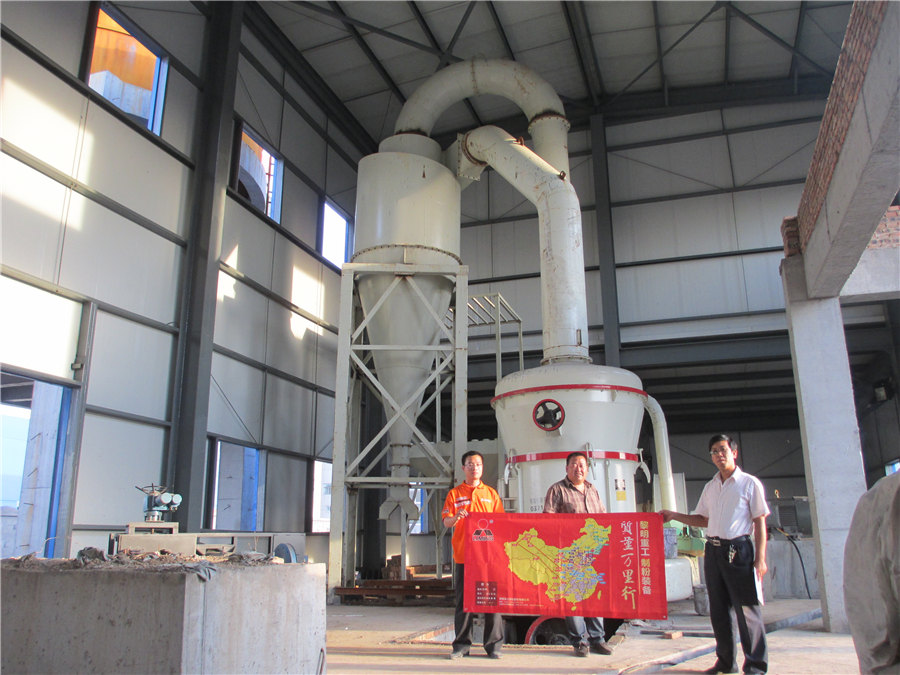
Iron processing Smelting, Refining, Alloying
Iron processing Smelting, Refining, Alloying: The primary objective of iron making is to release iron from chemical combination with oxygen, and, since the blast furnace is much the most efficient process, it receives the most attention Extraction of Metals Extraction of Iron Chemistry of the blast furnace () Limestone is calcium carbonate (CaCO 3) and it is added to the blast furnace to remove the impurities in the iron ore Calcium carbonate is decomposed by heat in the furnace to give calcium oxide and carbon dioxide This is called thermal decomposition (see examples of other carbonates) Extraction of Iron in the Blast Furnace GCSE SCIENCECopper processing Roasting, Smelting, Converting: Once a concentrate has been produced containing copper and other metals of value (such as gold and silver), the next step is to remove impurity elements In older processes the concentrate, containing between 5 and 10 percent water, is first roasted in a cylindrical, refractorylined furnace of either the hearth or fluidized Copper processing Roasting, Smelting, Converting Britannica2024年1月1日 With increasing amount of high silica bauxites used as Bayer refinery feed, the reprecipitation of dissolved silicates results in greater volumes of desilication product (commonly known as DSP (PDF) Chemical Thermodynamics and Reaction Kinetics of
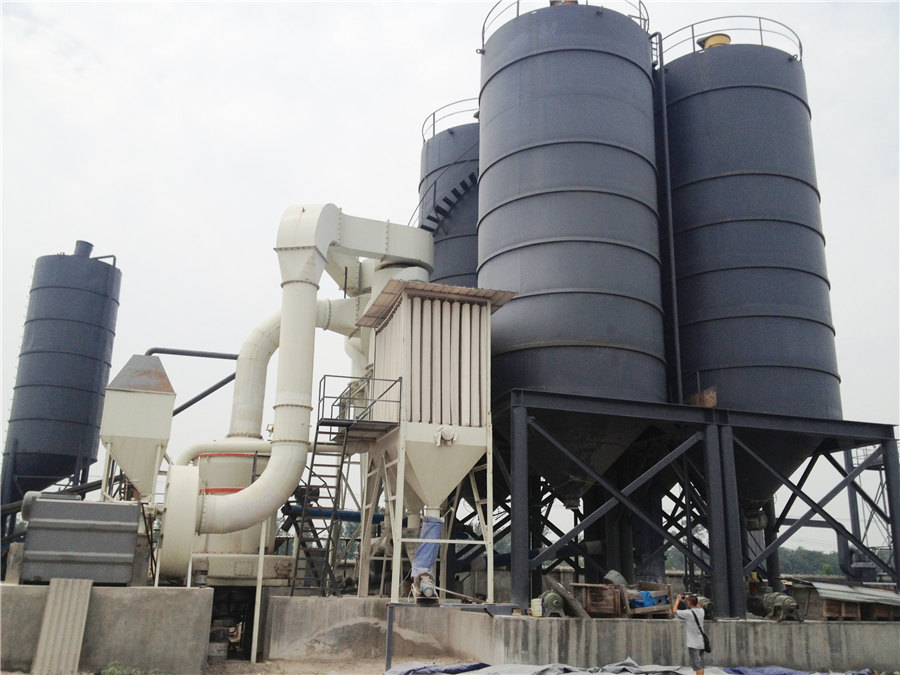
Lesson Explainer: Extracting Iron Nagwa
2 天之前 The limestone decomposes (an exothermic reaction), heating up the furnace The limestone reduces the iron ore to iron The limestone contributes to the overall yield as it contains iron metal impurities The limestone provides a source of 2022年9月25日 Iron was recovered from flotation tailings by deep reduction followed by magnetic separation process (at reduction temperature 1290 °C for 25 min; reductant blue carbon 159%; additive limestone 10%, soda ash 15% and binder 5%), and iron concentrate with an iron content of 926% and iron recovery of 9133% was obtainedExtraction and separation of copper and iron from copper smelting 2016年2月1日 Water stress is a current environmental menace mainly driven by over exploitation of aquifers, which is triggering poor water quality with high concentration of minerals in extracted groundwater(PDF) Optimization of silica removal with magnesium chloride in 2023年3月29日 Against the background of low global carbonization, blast furnace ironmaking technology with coking puts huge amounts of pressure on the global steel industry to save energy and reduce emissions due to its high pollution levels and high energy consumption Bath smelting reduction technology is globally favored and studied by metallurgists as a nonblast furnace Study on the Bath Smelting Reduction Reaction and Mechanism of Iron
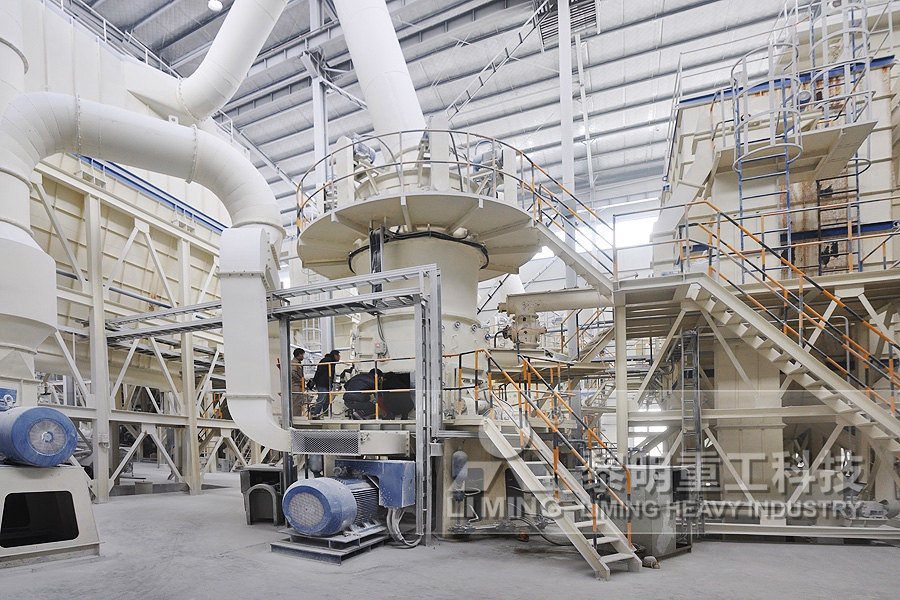
Write chemical equations for the reaction that take place during
2018年11月21日 Write chemical equations for the reaction that take place during smelting of haematite the equations that take place during the smelting of haematite is given above LimestoneCalcium carbonateHelps to remove acidic impurities from the iron by reacting with them to form molten slagAirOxygenAllows the coke to burn, SÐ8B ÉJí T ÆM¬óÿïûÓþ¿ÃZ÷ã sR µüÄ ! f šL Ó™–\–lmc%²äJ2 2üÿ¾©Õ¬§ä× íÙhòu"!i Bòº×óMÕö/ƒÙ*œ @j Rg ²û í}÷½ÿë×G 4݇”[ 5†2ã ¥ ï£ rïB ù wq±”°{ÖùÈ™hÏF Dá,bÎŒÀmÑ Ä¯,Ëúì´[†¯½Ï½æmKêäÖØ ~ 232: Pyrometallurgy Chemistry LibreTextsLimestone is a very important material in the making of iron and steel Iron ores, such as haematite, contain iron oxide The production of iron involves reducing this iron oxide to iron in a furnace In steelmaking, limestone is used as a flux to remove impurities during the process A flux is a substance that is melted to make a slag Slag The Uses of Limestone in the Production of Iron and Steel, in Extraction of Metals Extraction of Iron Iron is extracted from its ore in the blast furnace The main iron ore is called haematite Haematite is iron(III) oxide Fe 2 O 3 The iron ore contains impurities, mainly silica (silicon dioxide) Limestone (calcium carbonate) is added to the iron ore which reacts with the silica to form molten calcium silicate in the blast furnaceExtraction of Iron Haematite Limestone GCSE SCIENCE
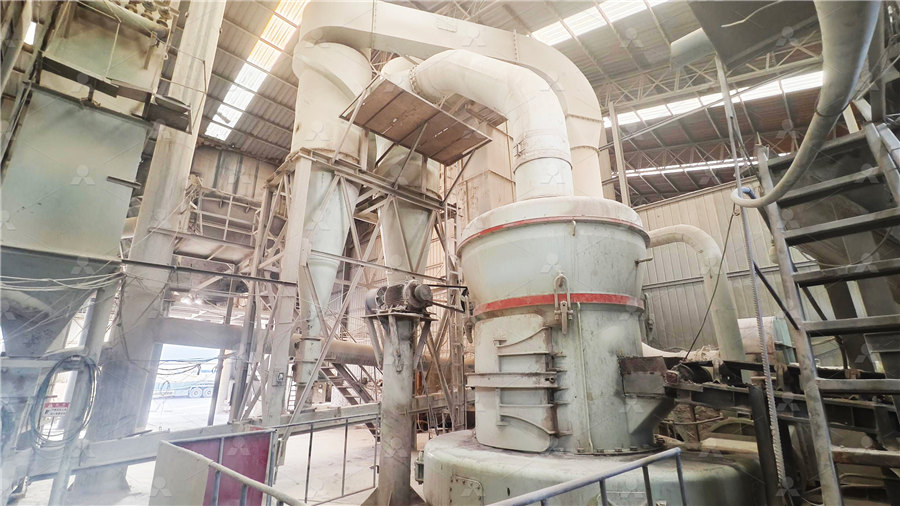
Reduction of Iron Oxides with Hydrogen—A Review
Tortuosity describes the influence of the shape of pores 78 Due to the complex nature of iron oxide pellet reduction, the following assumptions were required 77: The pellets are isothermal and spherical with uniform porosity and consist of dense fine grains with a constant radius; the reduction of grains is reversible, proceeds topochemically, and is controlled by chemical The Bayer process is a chemical process for refining aluminium hydroxide, Al(OH) 3 from bauxite; this aluminium hydroxide is subsequently calcined to produce alumina, Al 2 O 3The basis of the Bayer process is an understanding of the characteristics of the sodiumhydroxide—sodiumaluminate solution relationship, namely its ability to keep sodiumaluminate in a dissolved state Chemical Processing of Bauxite: Alumina and Silica The following substances are put into the blast furnace while manufacturing iron : Iron ore coke limestone and hot air In this context— i What is the name of the most common ore of iron and what is its chemical formula ? ii What is the purpose of using : a The coke b The limestone iii Write the equation for the reduction reaction which produces iron iv Name the substance The following substances are put into the blast furnace while 2020年2月20日 The chemical composition of each slag was calculated by using the R D value of each experiment and the chemical composition of the samples (mixtures of iron ore and lime) and offgas Table 8 shows the values of the main parameters of the products and the coproducts of each experiment for the operation time of 1495 sSlag Formation during Reduction of Iron Oxide Using Hydrogen
.jpg)
Smelting: Types, Process, Uses, Challenge, Effect Science Info
2023年9月20日 This reaction produces slag, which is capable of melting at lower temperatures Metal workers in smelting utilize flux for a variety of applications Catalyzing a reaction and chemically bonding the impurities and reaction product with the metal is the most prevalent There are three distinct types of fluxes:Decomposition Reaction of Limestone Free download as Word Doc (doc), PDF File (pdf), Text File (txt) or read online for free A decomposition reaction is a type of chemical reaction where a substance breaks down into simpler components For example, limestone (calcium carbonate) can decompose into calcium oxide and carbon dioxide This reaction is exothermic, releasing Decomposition Reaction of Limestone PDF Chemical Reactions



